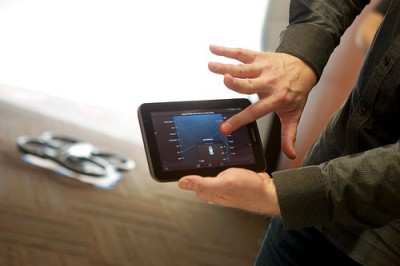The proliferation of mobile technology has helped to firmly entrench smartphone and tablets in the very fabric of everyday lives.

To man’s credit, he has found a way to find good use for them as something other than a way to track his fantasy football stats or play Fruit Ninja.
According to GoWireless, mobile technology has been a boon for the business world, allowing for degrees of connectivity and interactivity that once were never thought to be possible.
It would seem only natural then that this trend should spill over into the classroom. However, is that really a good thing?
It’s important to be clear here that this question is not being posed in reference to the college and university environment. It’s evident that mobile devices provide benefits to top students in those settings.
In fact, if it’s been shown that having access to educational materials via tablets and smartphones has benefitted post-secondary school students, couldn’t one also assume that it would offer the same benefits in a K-12 setting? This is where the discussion gets interesting.
Legitimate Concerns on the Part of Educators
 Ask anyone who has sat through a college-level lecture after having observed primary and secondary school instruction, and the first difference that they’re likely to point out is the level of engagement of the students.
Ask anyone who has sat through a college-level lecture after having observed primary and secondary school instruction, and the first difference that they’re likely to point out is the level of engagement of the students.
Given the already inherent degree of disconnect, many educators who work in the K-12 setting argue that the last thing that their students need is another electronic device to distract their attention.
As tech-savvy as today’s youth are, one can easily understand the concern that some have that the kids could easily use school-issued smart devices to access inappropriate or distracting content while in class.
Another major concern that primary and secondary education providers have about allowing mobile devices in the classroom as that it could introduce an whole new level of cyberbullying into the classroom. While smart devices do allow for improved interactivity, that’s not to say that all communication that would be going back and forth across a scholastic network would be good.
Plus, in this case, there’s no teacher there to intercept the note as it’s making its way across the class.
Potential Benefits That Cannot Be Overlooked
There are those who would say that choosing to ignore the potential problems that using mobile devices in the classroom present isn’t doing kids any favors. Rather, the more appropriate thing would be to embrace the technology early and teach kids how to use it responsibly. It’s hard to argue that such efforts wouldn’t result in kids being better prepared to utilize mobile resources better when they are placed in environment where their use is necessary.
Other potential advantages the mobile devices could offer elementary and secondary schools students include the following:
- The chance to become more involved in class
- Access to more reliable information faster
- Increased opportunities to collaborate with other students
As of right now, many of these benefits are simply theoretical as the use mobile technology in schools is still not to the point of producing reliable data to support its benefit.
The argument on both sides of the aisle regarding the impact that mobile devices could have in a classroom setting presents valid points. The concerns of those who feel that they could disrupt the structure of the classroom may indeed be well-founded.
However, as is often the case with any new educational opportunity, using mobile technology to help support classroom studies will likely be a process that plunges forward, achieving both successes and failures along the path of today’s educators turning it into the tool that tomorrow’s teachers will truly benefit from.
photo credit: DEMO-Mobile-Setup-0120 via photopin (license)
photo credit: DEMO-Mobile-Setup-0476 via photopin (license)


